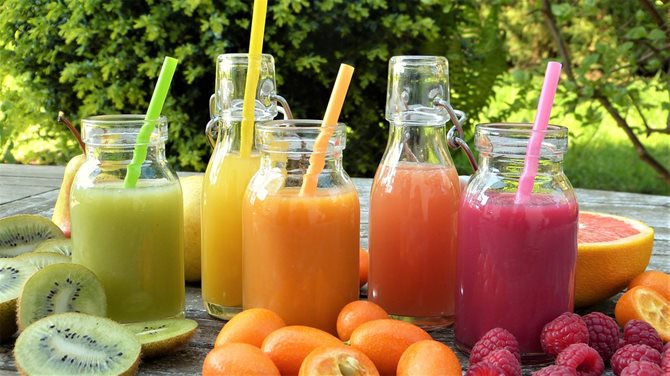The Nutritional Content of Smoothies

- Project start date: 10 October 2008
- Project status: Completed
- Project type: Nutrition
- Discipline: Food reviews
- Author/s: Safefood research
Research objective
To investigate consumer knowledge, attitudes and beliefs around the nutritional content of smoothies upon which to base Safefood communication about smoothies.
Outputs
Research report
- Title: Consumer Knowledge, Attitudes and Beliefs around the Nutritional Content of Smoothies
- Date: 6 February 2009
- Summary: Dietary guidelines recommend that we eat five or more portions of fruit and vegetables every day, and consumers are increasingly using smoothies as a way to achieve this.
- Findings:
- One in three adults on the island of Ireland said they drink smoothies
- Smoothies, were more popular among women, the younger age group and higher social classes
- Those who drank smoothies did so predominantly because they liked the taste, followed by a desire to be healthy in some way, be it to increase their fruit intake or increase their consumption of ‘natural’ foodstuffs
- Non-smoothie drinkers cited lack of interest, a dislike of the consistency of the drink, expense and excessive sweetness as some of the reasons for not drinking smoothies
- Approximately four in ten smoothie drinkers on the island were frequent consumers of smoothies, drinking them at least two to five times a week
- There was a clear preference for pre-packed and home-made smoothies in NI, while in ROI there was a stronger preference for made-to-order smoothies
A number of misconceptions concerning smoothies were evidenced:
- Over-expectations as to ‘5-a-day’ contributions. It appeared that the overriding common belief was that they are high in fruit (average four portions) and dairy (average two portions)
- Awareness of smoothie ingredients appeared to be low
- Many perceived smoothies to be low in calories which may or may not be the case depending on the smoothie product purchased.
Smoothie consumers and non-consumers generally perceived smoothies as a healthy food, however, there was also some confusion observed:
- Consumers seemed aware that smoothies were high in natural sugars, and confused as to whether they were high in added sugars
- There was confusion about the effects of smoothie consumption on dental health, with a divide in opinion among the general population and among smoothie consumers themselves
- Smoothie drinkers were much firmer in their views regarding smoothies including their health value, and their sugar and calorie contents. Non-smoothie drinkers cited much higher levels of don’t knows
- Smoothie consumers were generally of the opinion that smoothies were a good alternative option for lunch or breakfast
- Recommendations:
The research suggests that consumers would benefit from more information on smoothies to enable them to make a fully informed, healthier choice. Key messages for consumers are that:
- Smoothies are one of the many ways that we can include fruits and vegetables in our diets
- Smoothies only count as one portion of fruit and vegetables a day, regardless of how much is consumed.
- Smoothies that contain milk or yoghurt also contribute to calcium and dairy food intakes
- Smoothies should be consumed with a meal for dental health reasons. They are high in naturally-occurring sugar which can damage teeth so drinking smoothies between meals should be avoided
- It is best to drink smoothies through a straw. This reduces the amount of sugar coming in contact with teeth
- The ingredients used in ready-made or made-to-order smoothies can vary, thus can impact on the calorie, fat and sugar content of these products. Read the labels on these products (in the case of ready-made, prepackaged smoothies) and/look out/ask for smoothies made with: fresh/frozen fruit; unsweetened fruit juices; low-fat dairy products, and no other additional ingredients that would add to the fat and sugar content of the product,such as added sugar, honey or syrup.




